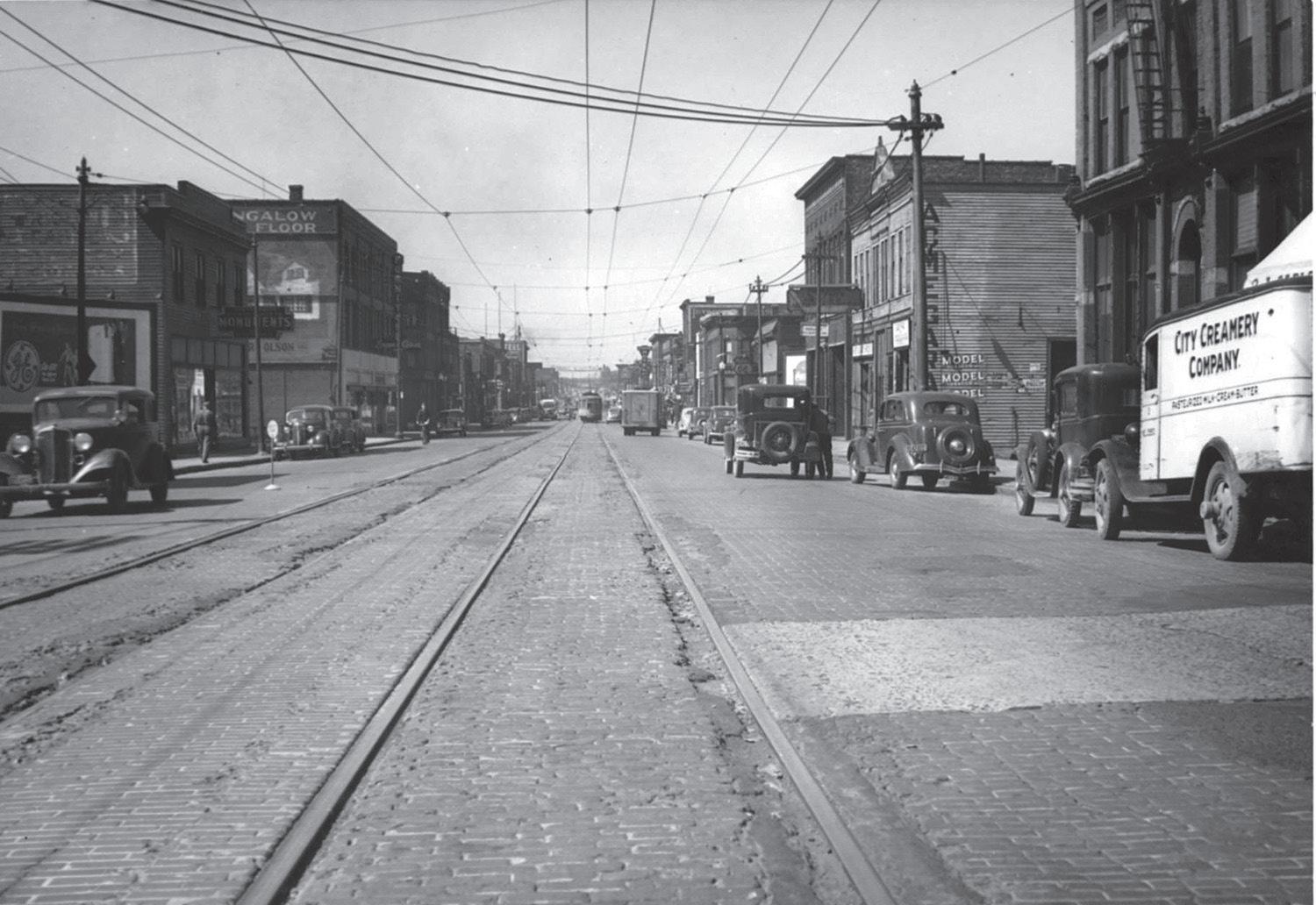
4 minute read
‘Beautiful and a little rustic’
Lincoln Park a place of change
By Brooks Johnson bjohnson@duluthnews.com
Here’s a neighborhood with a reputation. What kind of reputation? Depends on what you’ve heard.
Some know it for the breweries, cideries, restaurants and shops that have proliferated largely along West Superior Street — the Lincoln Park Craft District. Others know it as a historically downtrodden, highcrime area — the “Friendly West End,” they’ll intone ironically.
But Lincoln Park is too big, too diverse to be so easily pinned down. It embodies both of those descriptions, and so much more.
West End
Before it was Lincoln Park it was the West End. Before it was the West End it was, in part, Rice’s Point, one of Duluth’s founding townships in the late 1800s. As new residents flocked to the swiftly developing port city, many European immigrants made their homes past the Point of Rocks.
“While many skilled and professional transplants to Duluth mostly found places to live north and east of downtown, families of unskilled laborers settled in undeveloped areas, mostly found in the West End, close to the mills and docks where they would find work,” wrote Tony Dierckins and Maryanne C. Norton in their book “Lost Duluth”. Duluth’s first ore docks, those arteries of industry, were joined by a number of other businesses and industries spanning from cigar makers and candy companies to clothing companies and knitting mills: Clyde Iron Works, ZinsmasterSmith Bread Company, The Duluth Brewing and Malting Company, F.A. Patrick Company, The Bridgeman-Russell Company, Duluth Tent and Awning, Anderson Furniture and more.
The neighborhood grew and shapeshifted over the decades as these and other industries drew the residents and businesses needed to support them. In 1920 the neighborhood’s population reached 19,000 — today it is less than half of that.
Duluth and the West End especially followed many Rust Belt cities into decline in the second half of the 20th century as manufacturing moved overseas, automated or otherwise folded, leaving hollow campuses and broken promises.
A few rebranding attempts would follow.
“Several decades ago the West End Business Association added the word ‘friendly’ to the name of the business district, which became ‘The Friendly West End.’ It suited the area, I thought,” wrote Linda LeGarde Grover in a 2017 column recounting her and her father’s upbringing in the neighborhood. “Sometime during the 1990s the entire neighborhood added another identity, ‘Lincoln Park’ which is a nice name, too: the park itself is beautiful and a little rustic, like the West End. My dad told me, however, that it would always be the West End to him.”
Lincoln Park
It was late in 1995, in fact, that Mayor Gary Doty and West End business/community leaders agreed to change the name to Lincoln Park. It was not immediately embraced, but Craig Lincoln wrote in a News Tribune column in 1996 that the debate over the name was also a debate over the neighborhood’s very character.
“People in the West End knew it was a good place to live and that a lot of big changes were making it better. Some people from other areas of the city thought of the neighborhood as an area plagued by seedy bars and urban blight. The image of seedy bars is one reason business owners and the West End Neighborhood Coalition wanted to drop the old name and adopt the name of the neighborhood school and popular park along Miller Creek. They hoped the new name would reflect those positive changes.”
Visiting the namesake park itself, a wooded trail follows Miller Creek on one side; a winding road chases it on the other. It is quiet here, in the middle of Duluth’s densest neighborhood, even when you arrive at the empty playground on a warm summer afternoon.

Don’t be fooled; Lincoln Park today is full of young families — compared to the city overall there is a higher percentage of children living here, and the population overall skews younger. It is more diverse, as well: One in five neighborhood residents is nonwhite, compared with one in 10 across the city as a whole.
But one in four children in Lincoln Park live below the poverty level — twice the state average — and 60 percent live in single-parent households, again twice the state rate, according to data from Bridging Health North.
“Finding good-paying jobs is tough,” said Jodi Broadwell, executive director of the Lincoln Park Children & Families Collaborative. “And safety is always an issue. One of our moms has video cameras around her house and doesn’t let children play outside without her.”
As opioids and meth continue to ravage poorer parts of the country, Lincoln Park has seen its share of busts, stray needles, overdoses and drug-fueled violence.
But it’s not all bad news.
In Broadwell’s years working and living in the neighborhood, she has seen kids eager to help out and be good neighbors.
“It is like a village and we are trying to take care of each other,” she said. “Kids in general are easy to talk to, they just need to have caring adults in their life and things to keep them busy.”
That new arcade might help keep them busy. The commercial development rapidly remaking several blocks of West Superior Street and beyond isn’t slowing anytime soon as more businesses are added every month to the Craft District.
When Broadwell looks at all that activity she’s excited, because she has money to spend there every now and then. But many residents don’t have a dime left over after balancing their childcare, rent, transportation and grocery budgets — nearly half of renters already spend more than a third of their income on rent. And if rents and property taxes rise as the commercial success draws new residents?
“The business community is touting revitalization, but residents are worried about gentrification,” Broadwell said. “There are two conversations happening.”










